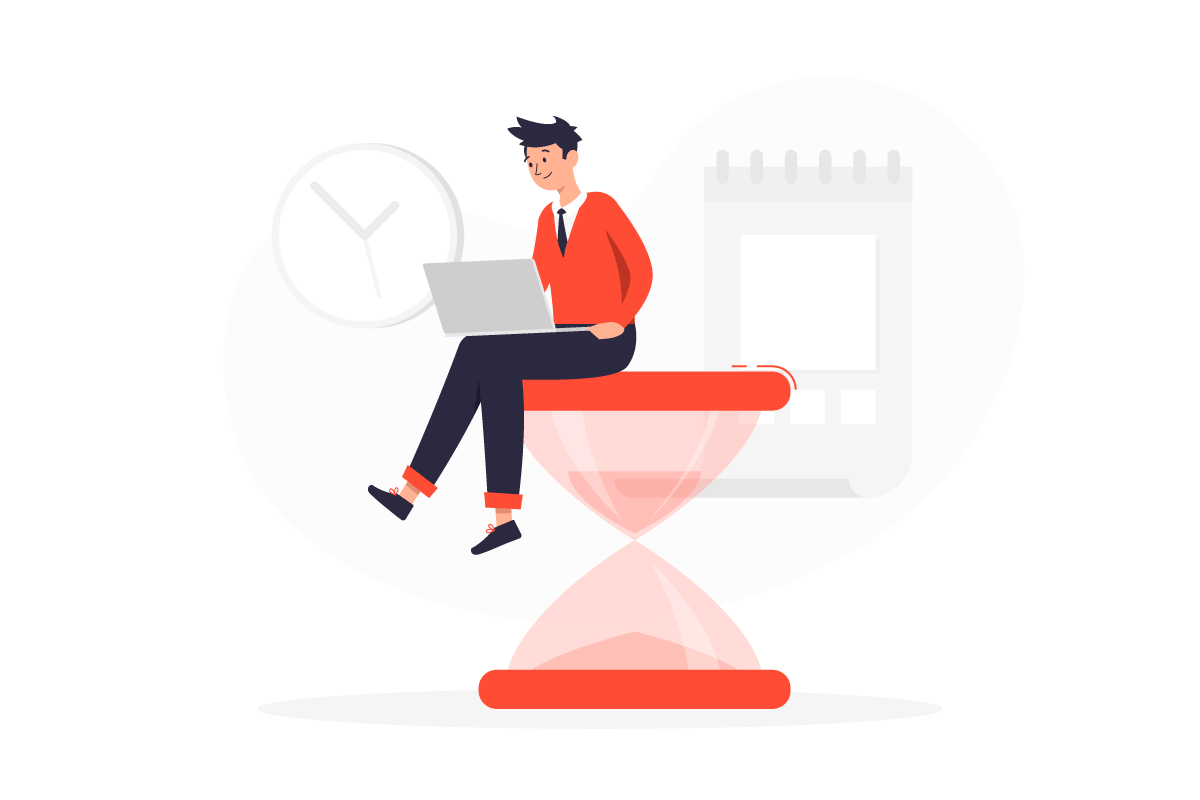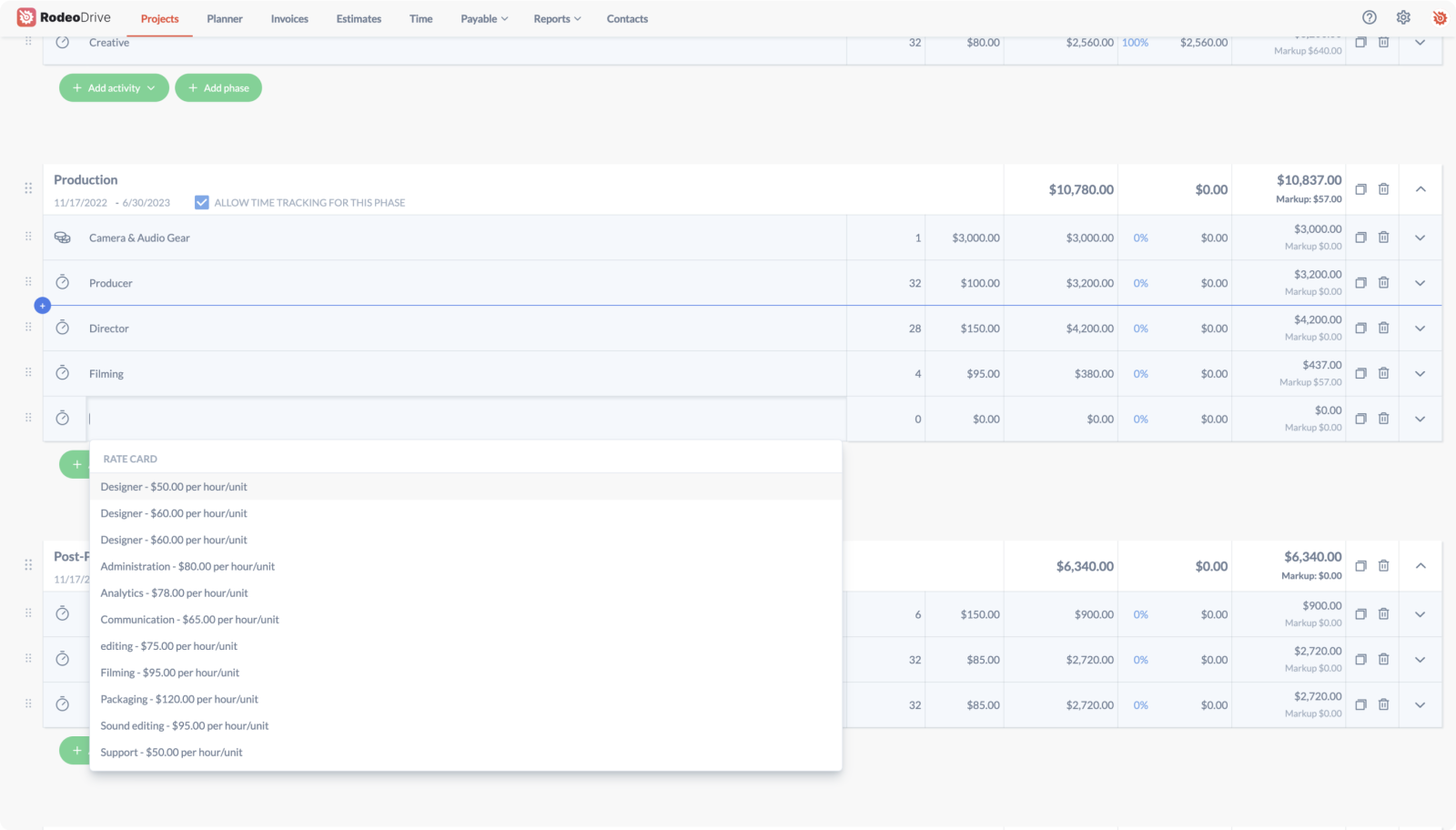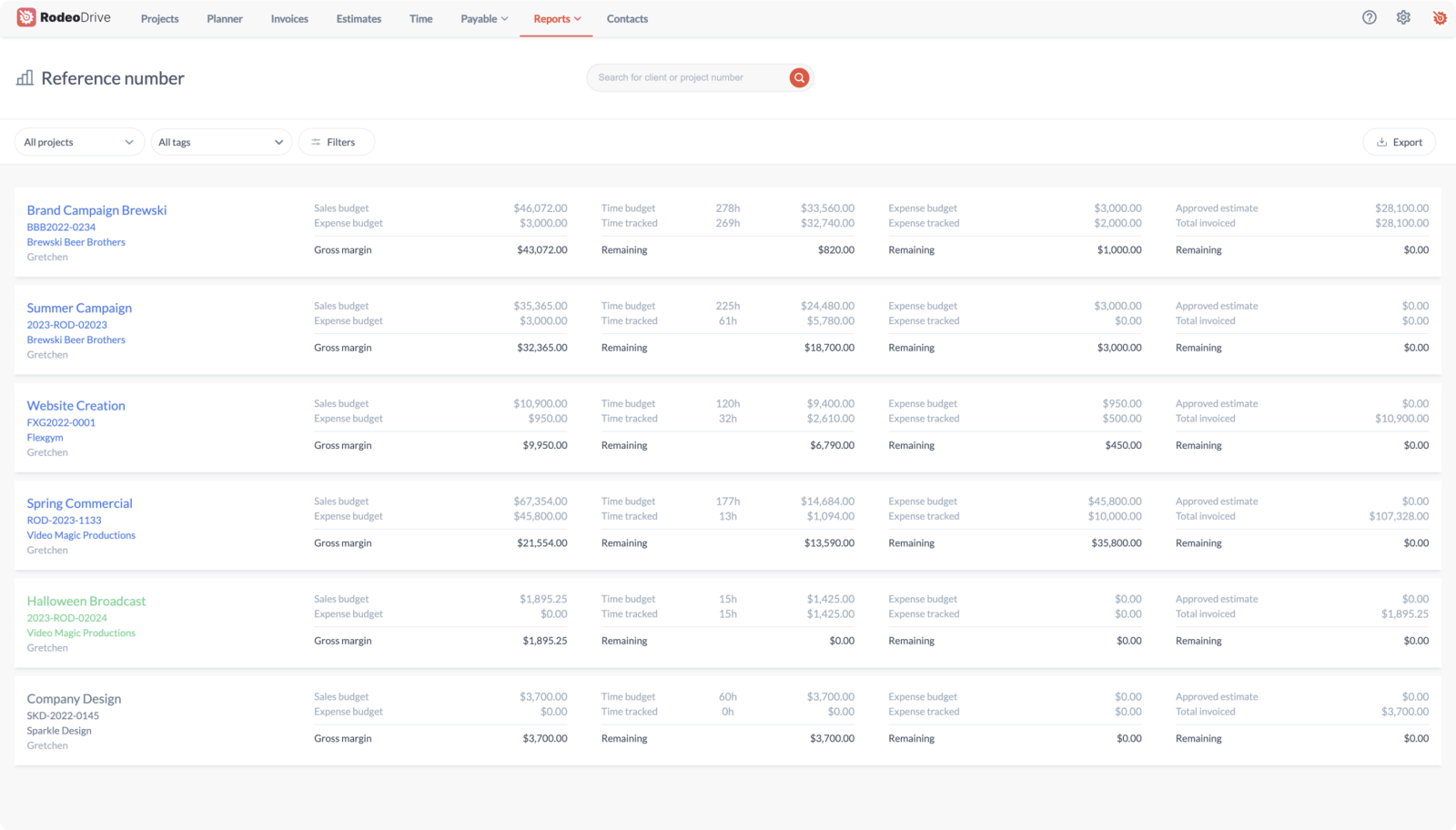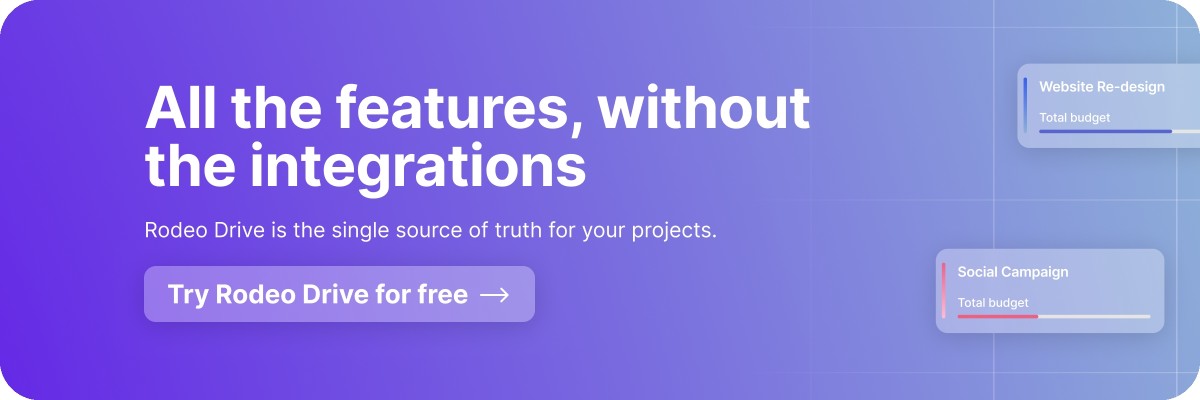How to Improve Workplace Efficiency: 10 Proven Strategies That Work
Constantly juggling tasks, struggling to meet deadlines, and drowning in a never-ending to-do list at work. We've all been there! On average, we spend 27% of office hours feeling disorganized.
But here's the good news: there are proven strategies that can help you regain control of your workday. Roll up your sleeves, dive into the world of workplace efficiency, and discover the tactics that will supercharge your projects.
What does working efficiently mean?
Efficiency in the workplace is the holy grail of productivity. It's the art of accomplishing tasks and achieving goals with the least effort and resources.
Besides being great for mental health, working efficiently benefits the company and its future. According to a survey conducted by McKinsey, highly efficient organizations outperform their less efficient counterparts in terms of revenue growth and profitability.
We all strive for that magical balance where we can get everything done within working hours without feeling overwhelmed or drained in our personal life. However, achieving workplace efficiency can seem unrealistic in a world of distractions and competing demands.
Ultimately, working efficiently means achieving desired outcomes and goals with the optimal use of resources, allowing you to thrive at the office or your desk at home.
Work efficiency vs. work productivity: What are the differences?
Work efficiency and work productivity are related concepts but have distinct differences.
Firstly, work efficiency optimizes processes and workflows to maximize output while minimizing input. Efficient work involves finding the most effective and streamlined ways to complete your tasks, eliminating unnecessary steps, and utilizing resources effectively. This translates to working smarter, not harder, and aims to achieve the desired results most efficiently.
Productivity is a measure of effectiveness and is typically assessed by evaluating the quantity or quality of the final deliverables. Work productivity measures the output or work produced within a given timeframe. It focuses on the quantity of work completed and the overall output generated.
There are significant differences in the approach and evaluation of work efficiency and productivity:
- Approach: Work efficiency involves finding the most effective methods to complete tasks. The focus is on optimizing the process itself to maximize output. Work productivity measures the tangible outcomes of the work performed.
- Productivity: Simply being productive doesn't necessarily mean working efficiently. It is possible to be highly productive but inefficient if the processes or methods are time-consuming, wasteful, or ineffective.
- Evaluation: Work efficiency is often evaluated by assessing the effectiveness of processes and workflows, identifying areas of improvement, and implementing changes to enhance efficiency. It involves analyzing the methods and systems in place to determine how tasks can be completed more effectively. Work productivity is evaluated by measuring the quantity or quality of output produced. It may involve tracking metrics such as units produced, revenue generated, or goals accomplished.
How do work efficiency and work productivity relate
Work efficiency and productivity are closely related and can influence each other.
- Improved efficiency often leads to increased productivity, as streamlining processes and eliminating waste can result in more output within a given timeframe.
- Similarly, high productivity can indicate efficiency, as accomplishing a significant volume of deliverables or projects suggests effective utilization of resources.
In practice, aim to strike a balance between work efficiency and work productivity for your team. By optimizing processes and utilizing resources effectively (efficiency), teams can generate a higher quantity or quality of output (productivity).
How can we improve efficiency in the workplace?
By fostering a culture of efficiency, you can optimize internal workflows, enhance productivity, and achieve better outcomes.
Firstly, organize and have a clear understanding of the tasks at hand. Break down complex tasks into smaller, manageable parts, set realistic deadlines, and utilize checklists or project management software to track progress and ensure completion.
Here are some other ways you can increase efficiency:
- Identify and eliminate unnecessary steps or bottlenecks in workflows.
- Encourage open and efficient communication within the team. Establish clear channels for communication, and promote active listening to avoid misunderstandings and delays.
- Invest in training opportunities to enhance or reward employees' skills and knowledge.
10 proven strategies to take efficiency in the workplace to the next level
We all know how tempting it can be to scroll through social media or find creative ways to procrastinate at work. It's easy to get caught up in distractions that hinder our efficiency in the workplace. While you may still be getting things done, improving your efficiency can improve your overall output and gives you peace of mind after your workday.
To help you overcome those efficiency hurdles, here are ten tried and tested strategies to improve your workplace efficiency:
1. Plan and set realistic goals: the foundation for efficient work
When it comes to improving efficiency in the workplace, strategic planning and setting realistic goals are the fundamental building blocks, as project completion delays or even failures can cause stress and decrease team productivity and morale.
Planning lays the foundation for productivity, but it's important to note that planning alone doesn't automatically guarantee efficiency. The combination of planning and setting achievable goals truly leads to optimal efficiency.
Related: The Ins and Outs of the Strategic Planning Process
By starting your day with a well-thought-out plan, you set yourself up for success. When you have a clear roadmap of daily activities, distractions make you less likely to get sidetracked.
Setting realistic goals is crucial because it allows you to understand your own capabilities and limitations or those of your team. By having a clear grasp of what you can realistically accomplish within the workday, you can make informed plans that are both challenging and attainable.
This level of self-awareness helps you stay focused on the goals and desired outcomes, fostering efficient planning.
When your goals are realistic, you avoid overloading yourself with an unrealistic workload. Instead, you can allocate the right amount of time and resources to each task, ensuring that they receive the attention they deserve. This approach prevents burnout, reduces stress, and increases the chances of accomplishing your objectives efficiently.
Remember that effective planning is just the first step. Take the time to set realistic goals that align with your abilities and priorities. With this powerful combination, you'll optimize your planning and elevate your efficiency, paving the way for successful outcomes and a more productive work environment.
2. Delegate what you can
Identify tasks that can be delegated to others and distribute workload efficiently. Delegating empowers your team, frees up your time for higher-priority tasks, and promotes overall efficiency.
Effective delegation is a continuous process in project management. Here’s how you do it:
- Identify the tasks: Make a list of tasks that need to be completed and assess which ones can be delegated. Determine the complexity of each task and the skill level required to accomplish it.
- Choose the right person: Assign tasks to individuals who have the necessary expertise and capacity to complete them effectively. Consider their workload and availability to ensure they can take on additional responsibilities. In Rodeo Drive, for example, you can allocate tasks to team members with enough availability.
- Provide clear instructions: Explain the desired outcome and provide any necessary guidelines or resources. Make sure the person understands the task and ask if they have any questions or need clarification.
- Provide support: Be available for questions and provide feedback when needed. Supportive communication and encouragement can go a long way in boosting their confidence and motivation.
3. Master time management

According to a study by the University of California, Irvine, employees are interrupted approximately every three minutes and five seconds. No wonder it feels like you can’t get work done.
These methods enable you to stay organized, minimize distractions, and reduce the risk of feeling overwhelmed.
- Time blocking involves segmenting your day into distinct blocks dedicated to specific tasks or activities. By allocating focused periods for different types of work, you can concentrate deeply on each task, preventing unnecessary context-switching and enhancing productivity.
- Time batching involves grouping similar tasks together and allocating specific time slots to tackle them in batches. This approach allows you to maintain a singular focus on related activities, reducing mental friction and enabling smoother transitions between tasks.
- Time boxing entails setting strict time limits for completing tasks. By allocating specific durations for each activity, you create a sense of urgency and promote heightened concentration.
- Day theming involves assigning specific themes or categories to different days of the week. For example, you might designate Mondays for creative projects, Tuesdays for meetings and collaborations, and so on.
Also read: 15 Effective Ways to Improve Team Time Management [Remote & In-Person]
4. Conquer distractions
Among the many distractions that derail our productivity, one device stands out as the primary culprit: the mobile phone.
Each time the screen lights up, we find ourselves shifting focus from our tasks to our phones, unwittingly spending more time than intended scrolling through notifications.
To significantly enhance your workplace efficiency, reclaiming your focus and minimizing phone-related distractions is crucial. Start by putting your phone on silent mode and placing it face-down on your desk.
For even better results, consider leaving it somewhere out of reach. Doing so removes the temptation to pick it up for a quick scroll, allowing you to remain fully engaged in your work.
The same principle applies to email notifications on your laptop. Disable them to prevent constant interruptions. If you receive an email that doesn't require an immediate response, wait to open it until you're ready to address it.
5. Embrace the word ‘no’
While it's admirable to be helpful, always saying "yes" to every request can undermine your own efficiency and productivity. It's time to make "no" your new motto.
When you constantly interrupt your ongoing tasks to address unrelated requests, you disrupt your workflow and lose valuable time and focus. While supporting your colleagues is important, it's crucial to establish boundaries and prioritize your own work. By completing your current task before taking on additional responsibilities, you ensure that your own work receives the attention it deserves.
Prioritizing your own work and goals means recognizing when to decline other projects or smaller tasks requested by colleagues. While it may feel challenging at first, there comes a point where you must assertively prioritize your commitments and respectfully decline additional responsibilities that could hinder your own progress.
By learning to say "no" strategically, you reclaim control over your time and energy, ensuring that you can dedicate yourself fully to the most impactful tasks. This conscious decision-making empowers you to achieve greater work efficiency and productivity, ultimately contributing to your professional growth and success.
Remember, it's not about being dismissive or unhelpful to your colleagues; it's about establishing boundaries and managing your workload effectively.
Related: 12 Ways to Upgrade Your Task Management Skills
6. Don’t underestimate the power of rest

In the pursuit of workplace efficiency, it may seem counterintuitive to advocate for taking breaks. Embrace the opportunity to step away from your tasks periodically, giving your brain the necessary reprieve it deserves.
Studies consistently show that taking breaks is essential for maintaining focus and maximizing productivity. Even a brief break of approximately 20 minutes can rejuvenate your mind and prevent mental fatigue. A simple stroll to the coffee corner or a quick bathroom break can provide your brain with the rest it needs before diving into another concentration marathon.
Don’t just power through
While it may be tempting to power through without breaks in an attempt to be more productive, this approach might be counterproductive.
Pushing yourself too hard without adequate rest leads to diminishing returns, as fatigue sets in and your ability to concentrate diminishes. In contrast, integrating regular breaks into your workday can help maintain a steady level of efficiency and prevent burnout.
Remember, taking breaks is not a sign of laziness but a strategic approach to optimizing your performance.
7. Develop and follow a workplace routine
The idea of having a routine may seem unexciting to some, as they associate it with monotony and boredom.
However, there's wisdom in establishing a consistent routine, as it can bring numerous benefits to your work life. Maintaining a structured routine helps you stay organized, fosters clarity of mind, and allows you to balance your professional and personal activities seamlessly.
By adhering to a routine, you create a sense of order and predictability in your workday. For example, starting your morning at the office with a cup of tea and enjoying a green apple, a habit you repeat every day, sets a positive tone for the day ahead. Taking a few minutes to chat with your teammates allows for social connection and camaraderie, fostering a positive work environment.
Following this, dedicating a specific timeframe, say 15 minutes, to check and respond to emails ensures that you stay on top of your communication without allowing it to consume your entire day.
Once your inbox is in order, you can then transition seamlessly into tackling your first task, fully focused and ready to dive in.
Address your priorities
Having a routine doesn't mean sacrificing flexibility or spontaneity; it serves as a guiding framework that keeps you grounded and efficient. Within this structure, you have the freedom to adapt and adjust as needed, addressing the unique demands and priorities of each day.
A well-crafted routine helps streamline your workflow, minimizes decision fatigue, and creates a sense of rhythm and stability. It allows you to allocate time and energy effectively, ensuring that essential tasks are completed while leaving room for creativity and problem-solving.
Develop a structure that works for you, combining essential tasks, rituals, and moments of connection with your team. By establishing a consistent routine, you'll experience increased productivity, improved focus, and greater control over your workday.
8. Ensure you have a quiet environment
A busy and noisy work environment can significantly hinder your efficiency in today's bustling and interconnected world. While open office spaces have become popular, fostering connection and flexibility, they often come at a cost to individual productivity.
Recognizing the impact of your surroundings on your work performance is essential. While changing desks daily may not always be feasible, you can still be mindful of your environment and seek out quieter spaces when needed.
For instance, if you find yourself situated next to a sales team engaged in continuous client conversations while you require a serene atmosphere to focus on writing a blog, consider alternative options.
Booking a meeting room or opting to work from a quieter location can provide the solace and tranquility you need to accomplish your tasks effectively. By consciously seeking out practical solutions, you prioritize creating an environment conducive to optimal productivity.
Embrace the importance of a peaceful work environment, and explore practical solutions that allow you to accomplish your tasks easily.
9. Foster a positive work culture
A study by the University of Warwick found that happy and efficient employees are 12% more productive than their counterparts. They also experience higher job satisfaction, leading to improved overall performance.
Encourage open communication, collaboration, and recognition within your team or organization. A positive work culture fosters engagement, motivation, and overall efficiency.
Celebrate milestones, recognize exceptional performance, and publicly praise individuals or teams when appropriate. This fosters a sense of accomplishment and boosts morale.
Pro tip: Team-building exercises are a great strategy to enhance efficiency in the creative workplace and a fun way to practice your performance management skills.
10. Take advantage of software tools
In the quest for workplace efficiency, investing in project management tools can prove to be a game-changer. These powerful software solutions, such as Rodeo Drive, offer a range of features designed to streamline your work processes, saving you and your company valuable time and effort.
That’s because project management tools encompass a variety of functionalities, including time tracking, planning, collaboration, and task management. By leveraging these tools, you can enhance your efficiency and productivity in numerous ways.
Additionally, planning tools offered by project management software empower you to organize and structure your work effectively. You can set realistic goals, define project milestones, and break down complex tasks into manageable subtasks.
This level of organization ensures that you stay on track, adhere to deadlines, and achieve your objectives efficiently.
Drive work efficiency with the right resources
Efficient time management is crucial for project-based teams, and Rodeo Drive is here to revolutionize the way you track and manage your team's hours. Our all-in-one project management tool is designed to save you time and effort, eliminating the need for third-party integrations.
“Getting a team of creatives to track exactly how much time they spend on each task used to be a big challenge. But Rodeo’s timer is so easy to use, that they rarely forget.”
Seamlessly manage your time
Gone are the days of manually tracking hours across multiple projects simultaneously. To improve work efficiency, you must empower your team to focus on what truly matters: delivering exceptional results. With Rodeo Drive, you can automate time-tracking and seamlessly manage hours for each project within a single platform.
Rodeo Drive offers two flexible ways to track time. Team members can record their hours as they go by starting and stopping their live timer. Alternatively, they can log time retrospectively using the convenient timecard feature. This versatility accommodates different work styles and ensures accurate time tracking, without any hassle.

The platform then syncs recorded time to a budgeted activity, which allows your budget to update in real time. According to Axell Avalon-Van Staveren, Brand Director at Digital Agency JaxX, “Getting a team of creatives to track exactly how much time they spend on each task used to be a big challenge. But Rodeo’s timer is so easy to use, that they rarely forget.”
An overview of Rodeo Drive’s powerful features
Our comprehensive platform offers features designed to streamline your workflow and maximize efficiency. Let's explore some of Rodeo Drive's most-loved features that will transform the way you manage your projects:
Budgeting made easy
Rodeo Drive’s budgeting feature allows you to split your budget into phases and estimate the time and expenses required to complete the tasks.
Once you’ve finished your budget, you can send the estimate to your client for approval directly from Rodeo Drive, including your company’s branding and terms and conditions.

Powerful insights
Rodeo Drive’s features are interconnected, resulting in automatically generated project reports to inform decision-making. This includes reporting insights on employee productivity, time registration, and project financials.

Customizable invoices
Rodeo Drive’s invoicing feature allows you to send customizable invoices to clients according to project phase, estimate, or actuals. You're able to personalize your estimates and invoices with your branding, terms and conditions, notes, and discounts. Then, you can send the invoices out via Rodeo Drive or Xero in the UK, or via QuickBooks in the US.
Flexible pricing
Instead of offering complicated pricing plans that charge you by feature set, users can access all of Rodeo Drive's features for a flat fee of $14.99 per user/month with the Achiever plan. We also offer a Free plan with more limited feature offerings.
Additional features
- Quickbooks (US) and Xero (UK) Integration: Create a smooth bookkeeping and billing process.
- Multilanguage: Easily switch languages in Rodeo Drive by selecting Dutch or English under ‘Preferred language.’
Ready to get started? Give Rodeo Drive a spin for free. Or plan a free demo with a Rodeo Drive expert to discuss how you can improve your and your team’s efficiency in the workplace.
--
Originally published on October 19, 2021. Updated on June 9, 2023.







